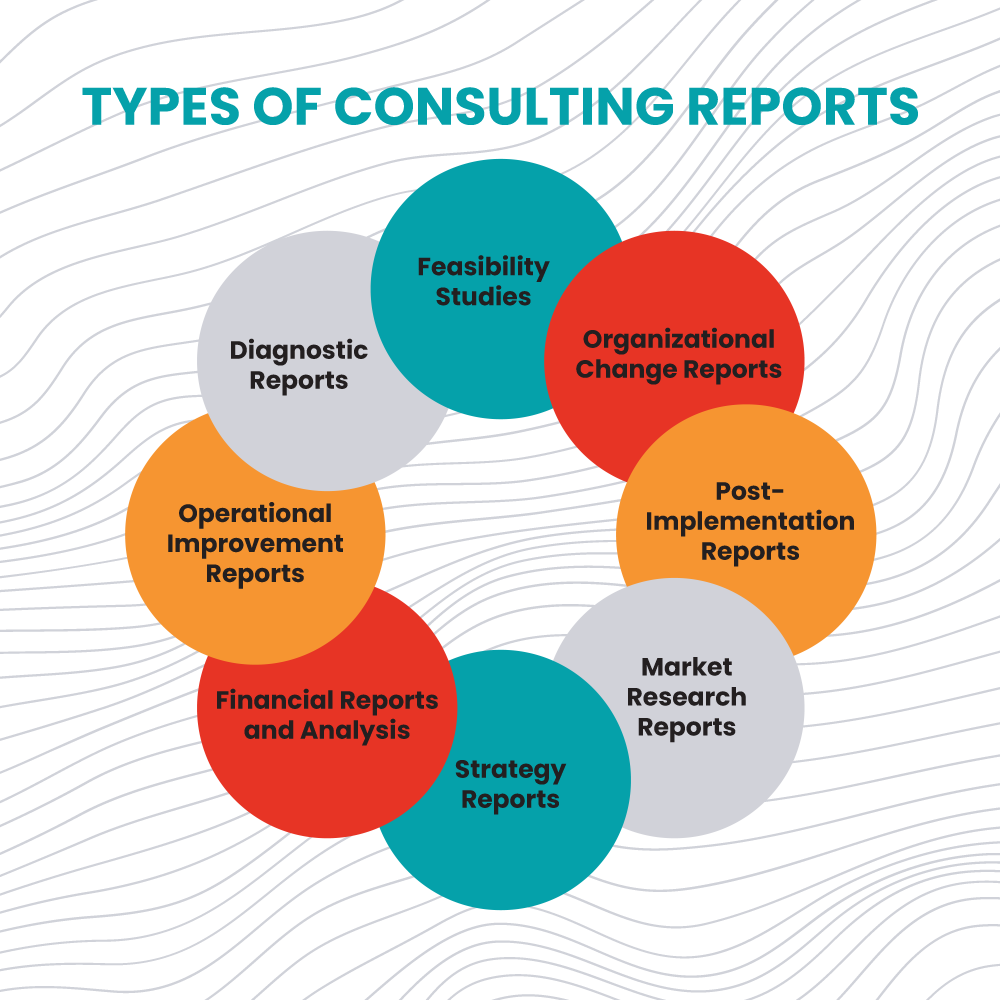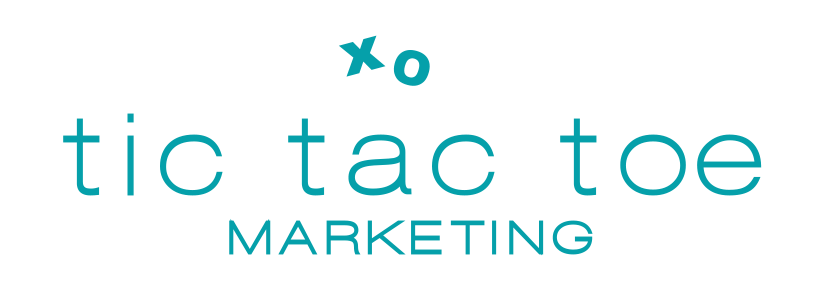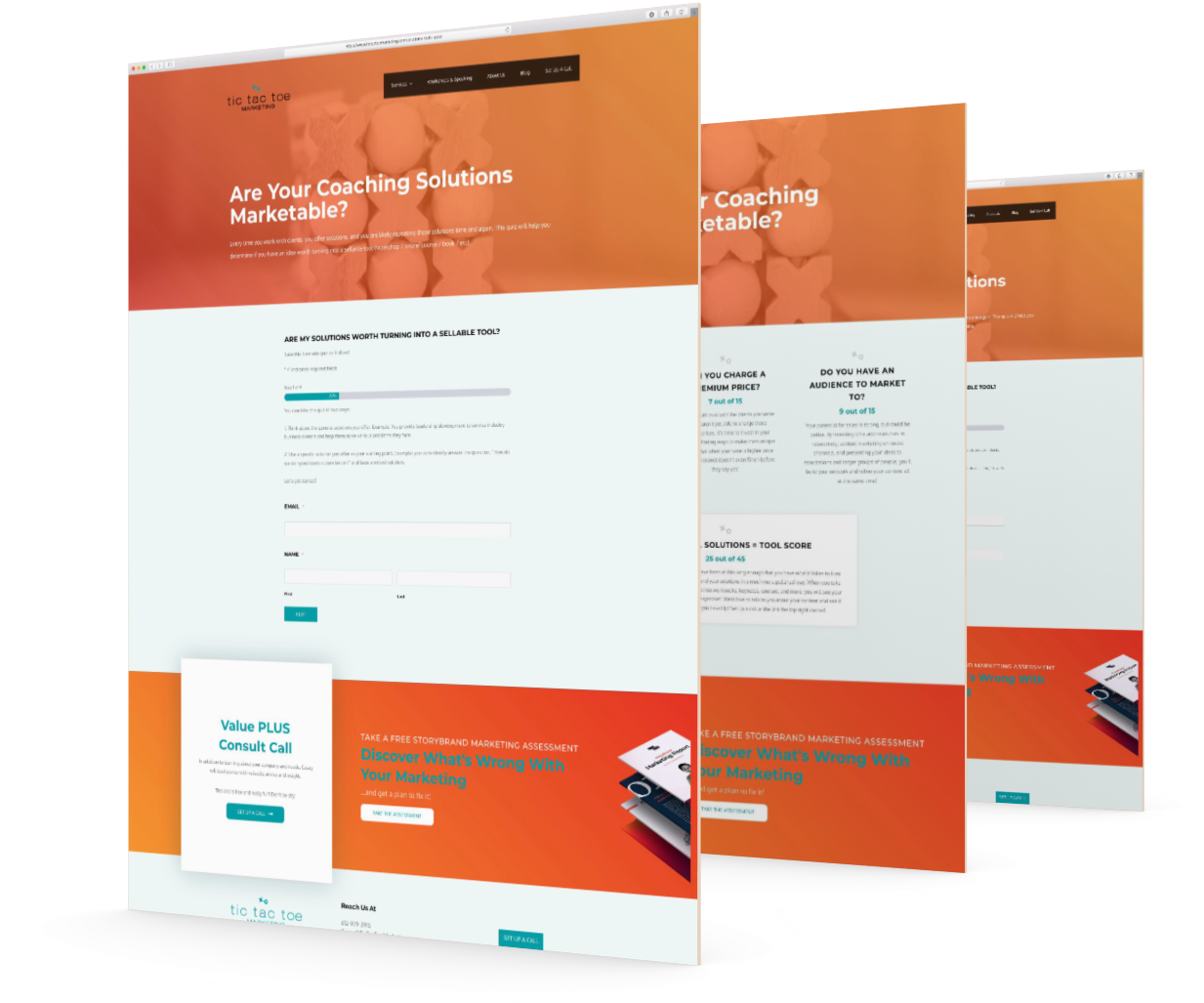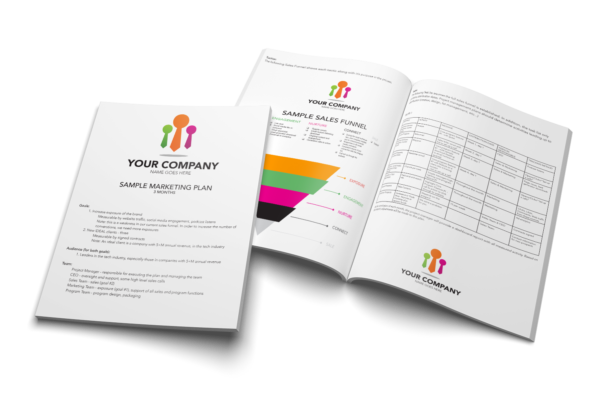In business consulting, comprehensive and well-structured reports convey insights, recommendations, and strategies to clients. A meticulously crafted consulting report serves as a roadmap for decision-making and showcases the expertise and value that consultants bring to the table. This blog post will explore the essential elements that make up the best consulting reports and discuss how they contribute to delivering impactful and actionable results.

Types of Consulting Reports
Consulting reports come in various forms, tailored to address specific client needs and engagement objectives. The type of consulting report chosen depends on the nature of the project, the desired outcomes, and the information to be communicated. This section will explore some common types of consulting reports and their key characteristics.
Diagnostic Reports
Diagnostic reports focus on analyzing a company’s current state to identify gaps, challenges, and areas for improvement. These reports typically involve assessing processes, systems, operations, and organizational structure. Diagnostic reports provide an in-depth understanding of the client’s current situation, offering insights into issues and recommending solutions.
Feasibility Studies
Feasibility studies assess the viability and potential of a proposed project or initiative. These reports evaluate factors such as market demand, financial feasibility, technical requirements, and risks associated with implementing the project. Feasibility studies provide clients with a comprehensive analysis, allowing them to make informed decisions regarding the viability of pursuing a particular opportunity.

Market Research Reports
Market research reports delve into understanding market dynamics, consumer behavior, industry trends, and competitive landscapes. Consultants collect and analyze data through surveys, interviews, focus groups, and secondary research to provide insights into market opportunities, target audiences, and potential growth strategies. Market research reports guide clients in making informed marketing and business development decisions.
Strategy Reports
Strategy reports outline the strategic direction and actions required for an organization to achieve its goals. These reports assess the competitive landscape, market trends, and internal capabilities to formulate strategic recommendations. Strategy reports typically include an analysis of the client’s strengths, weaknesses, opportunities, and threats (SWOT), along with actionable strategies to gain a competitive advantage.
Organizational Change Reports
Organizational change reports focus on managing change within an organization. They analyze the current organizational structure, culture, and processes to identify barriers and propose recommendations for successful change implementation. These reports provide a roadmap for organizations to navigate through transitions, mergers, acquisitions, or restructuring processes.

Financial Reports and Analysis
Financial reports and analysis involve assessing an organization’s financial health and performance. Consultants analyze financial statements, cash flow, profitability, and key financial ratios to provide insights into strengths, weaknesses, and opportunities. These reports help clients make informed financial decisions and optimize resource allocation.
Operational Improvement Reports
Operational improvement reports evaluate and recommend operational processes, efficiency, and productivity improvements. Consultants analyze workflows, identify bottlenecks, and propose solutions to enhance operational performance. These reports often involve lean management principles, process mapping, and cost optimization strategies.
Post-Implementation Reports:
Post-implementation reports assess the outcomes and impact of a previously implemented project or initiative. Consultants evaluate the implemented solution’s effectiveness, efficiency, and sustainability, gathering feedback from stakeholders and measuring key performance indicators. These reports provide insights for continuous improvement and inform future decision-making.
Sections of Your Report

Consulting Report Executive Summary
An effective consulting report begins with an executive summary that concisely overviews the project objectives, key findings, and recommendations. This section serves as a quick reference point for busy stakeholders, allowing them to grasp the report’s essence without immediately delving into the finer details.
Situational Analysis & Problem Statement
A well-executed situational analysis provides valuable insights into an organization’s current state and position within the broader business environment. It is a foundation for developing effective strategies, setting objectives, and making informed decisions to drive organizational success.
It also sets the context and outlines the scope of the consulting engagement.
This section also clearly states the problem statement or the business challenge and provides background information on the organization, industry, and relevant market trends. This section acts as a north star to the rest of the content. Like a mission statement, solving the problem should drive the work and final report.
Methodology
This section describes the approach, tools, and techniques employed during the consulting engagement. It sheds light on the data collection methods, analysis processes, and frameworks or models used to derive insights. Including the methodology instills confidence in the report’s credibility and demonstrates the rigor behind the consultant’s recommendations.
Learn more about how you can create your consulting frameworks and methodologies.

Consulting Report Findings and Analysis
This section is the bulk of the report and the section the client will be most interested in. The consultant presents the results of their research, analysis, and evaluation. This section should be data-driven, objectively highlighting key findings, trends, and patterns discovered during the project. Visual aids such as graphs, charts, and tables can enhance clarity and make complex information more accessible.
Additionally, the analysis should identify problems and explore underlying causes to provide a deeper understanding to the client.
Recommendations
Arguably the most critical section, recommendations provide practical and actionable steps for the client to address the identified issues. Consultants should present various strategic options and their pros, cons, and potential implications.
Recommendations should be tailored to the client’s goals and objectives, considering their unique circumstances, resources, and capabilities.
Consider also showing the movement from big-picture problems to strategies to specific tactics. Recommendations like this can help employees understand their role in responding to the report.
Implementation Plan
A well-structured consulting report includes a detailed implementation plan that outlines the steps required to execute the recommended strategies.
This plan should include timelines, responsibilities, and milestones, enabling the client to visualize the path forward and allocate resources effectively. It is also helpful to the client to map out touchpoints throughout the project at which the consultant can be helpful.
By providing a roadmap, consultants empower their clients to navigate change successfully.
Conclusion in a Consultant Report
The conclusion summarizes the key points discussed in the report and reinforces the benefits and value of implementing the recommendations. Consultants should reiterate their commitment to supporting the client throughout the implementation process and emphasize the positive impact that their expertise can have on the client’s business.
Appendices and Supporting Materials
Appendices offer supplementary information that supports the main report. This may include raw data, survey questionnaires, additional analysis, references, or other relevant materials. Including these resources demonstrates transparency, enables readers to delve deeper into specific topics, and adds credibility to the report.
Designing Impactful Consulting Reports
Design plays a crucial role in consulting reports’ effectiveness and visual appeal. A well-designed report enhances readability, engages the audience, and reinforces the credibility of the content. This section will explore key considerations for designing impactful consulting reports.
Consistent and Professional Layout
Consistency in layout is essential for creating a polished and professional report. Establish a clear hierarchy of headings, subheadings, and text formatting to guide readers through the report seamlessly. Utilize a consistent color palette, font style, and size throughout the document to maintain visual cohesion.

Visual Elements
Incorporating visual elements can significantly enhance the comprehension and retention of information. Graphs, charts, and infographics are practical tools for presenting data, trends, and comparisons visually appealingly. Use appropriate colors, labels, and annotations to make the visuals more engaging and easily understandable. However, ensure that visual elements are relevant, clear, and support the report’s narrative.
White Space and Formatting
White space refers to the empty spaces between paragraphs, sections, and visual elements. Sufficient white space enhances readability, allows for better focus on key points, and prevents the report from appearing cluttered. Ensure appropriate margins, line spacing, and paragraph spacing to give the report a clean and organized appearance.
Branding and Customization of Consultant Reports
Tailor the report’s design to reflect the client’s brand identity. Incorporate their logo, color scheme, and visual elements that align with their brand guidelines. Customizing the report to match the client’s branding enhances the report’s professionalism and strengthens the connection between the client and the consulting team.
Use of Headers and Bullets
Clear and descriptive headers help readers navigate through the report effortlessly. Use concise and informative headers to divide the report into logical sections and improve readability. Bullet points are effective for presenting key findings, recommendations, and action items succinctly. They draw attention to important information and make scanning and comprehending the content easier.
Typography and Readability
Choose a font that is easy to read on digital and print platforms. Maintain a balance between aesthetics and legibility by selecting a font size that is comfortable for reading. Pay attention to line lengths, line spacing, and paragraph breaks to ensure optimal readability. Break large blocks of text into smaller paragraphs to make the content more digestible.
Report Navigation
Include a table of contents at the beginning of the report to allow readers to navigate to specific sections of interest quickly. Incorporate page numbers and section references for easy cross-referencing. Consider adding hyperlinks for digital reports, enabling readers to access additional resources or external references conveniently.
Professional Formatting
Ensure the report is free from grammatical errors, typos, and inconsistencies. Proofread the content thoroughly and consider involving a professional editor or proofreader to ensure accuracy and clarity. A consistent and professional formatting style adds credibility to the report and enhances the consultant’s reputation.
Consulting Report Template
If you search for “consulting report templates,” you’ll likely get countless options. Pay attention to the software needed to use the template. If you are not skilled or familiar with design software, avoid anything Adobe Creative Suite creates (InDesign, Illustrator, Photoshop, etc). Canva is a more straightforward design option if you are comfortable with this tool. For those wanting simplicity, stick with a google doc or Word template.





